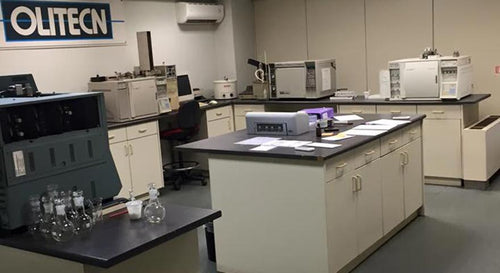Acidity in Olive Oil

Olive oil is used in a great variety of recipes to give a unique taste to a dish. While most people are aware there are different types of olive oil, they often do not know what the different designations mean. Long before it reaches your kitchen, olive oil goes through a lot of processing and testing to ensure that it meets your needs. The primary factor in determining how a particular olive oil is classified is the level of acidity of the olive oil.
To help you better understand the product, you need to know why the level of acidity matters. From there, you will be able to make a better choice for your specific cooking needs.
Why Acidity Matters
Essentially, the level of acid in an olive oil determines the way the product tastes. Olives contain a considerable amount of acid, which is what gives them their incredibly strong flavor. When they are used to produce olive oil, the acidity is not removed – at least not initially.
The “acidity” in olive oil is the result of the degree of breakdown of the triglycerides, due to a chemical reaction called hydrolysis or lipolysis, in which free fatty acids are formed. Oil extracted carelessly and/or from poor quality fruit suffers from a very significant breakdown of the triglycerides into fatty acids. So the fresher an olive is, or the better the care during its cultivation and harvesting, generally the better the oil will be.
Acid has a naturally sour taste that you probably won’t want to add to your food. The more acid an olive oil has, the less appealing it will taste and smell. This is why olive oils are given different designations – to help you know the quality you can expect from using a particular brand or product.
US Standards
To ensure that consumers know what they are buying, the US has designated categories to indicate the acidity level of a particular olive oil. The following are the current US standards for the different olive oil categories.
- US extra virgin olive oil is oil with an excellent flavor and odor. It must be free of fatty acid content and the acidity level must be less than 0.8%.
- US virgin olive oil is oil with reasonably good flavor and odor. It must be free of fatty acid content and the acidity level must be less than 2.0%.
- US olive oil is the least pure of the three categories and is a mix of both virgin oil and refined oils that have a combined acidity level between 2 and 3%.
There is a fourth category that should not be purchased for consumption. Called the US virgin olive oil not fit for human consumption without further processing, this category has an acidity level in excess of 3%. It has a poor flavor and odor, making it unlikely that you will want to use it without having it processed further.
At Liokareas we take the highest level of care to ensure excellent flavor with the lowest possible acidity level. All Liokareas EVOO is chemically analyzed at the time of production and the product’s acidity level is always below 0.3%. According to the US standards, this places our product in the US extra virgin olive oil designation. Because it is well below the requirement for the standard, our olive oil is considered ultra premium, surpassing the highest standards of quality.
Olive Oil Processing and Testing
Olive oil is produced by extracting the oils from fresh olives, preferably soon after being picked from the tree. Olives that are not fresh have already begun the breakdown process and will have a higher acidity level, meaning that the olive oil from them will be inferior in taste and smell. The process to extract oils has changed little over the last millennia. Fresh olives are harvested and left alone for 24 to 48 hours. They are then crushed to create a mash, which is a combination of the juice, skin, and pit of the olive. The mash is placed under further pressure to extract the oil and water from it. Any non-liquid in the mixture is removed through either decantation or centrifuge.
As you can see, there is very little opportunity for the introduction of chemicals and other ingredients, which is why the original olive is so important in the process. An olive that was either of poor quality or too ripe will produce more acid, reducing the quality of the final product. The sourness of the olive will carry over into the oil that it makes. There will, of course, be some olives that are used that are not optimal for the process. As long as a significant majority of the olives used are at the prime time for harvesting and are of excellent quality, the resulting oil should be nearly free of acid.
Of course, knowing how each of the categories is defined is helpful, but ensuring that a product meets a particular standard requires testing. There are ways to test olive oil at home, but you don’t want to test it when you are in the kitchen. This is why we ensure that our products are thoroughly tested and verified.
All of Liokareas’s testing is done by laboratories that are recognized by the International Olive Council (IOC), America’s Oil’s Chemist Society (AOCS), and the Federation of Seeds, Oils, and Fats Associations (FOSFA). This ensures that our products are always guaranteed to meet the strictest requirements because they are rigorously tested prior to shipment.


